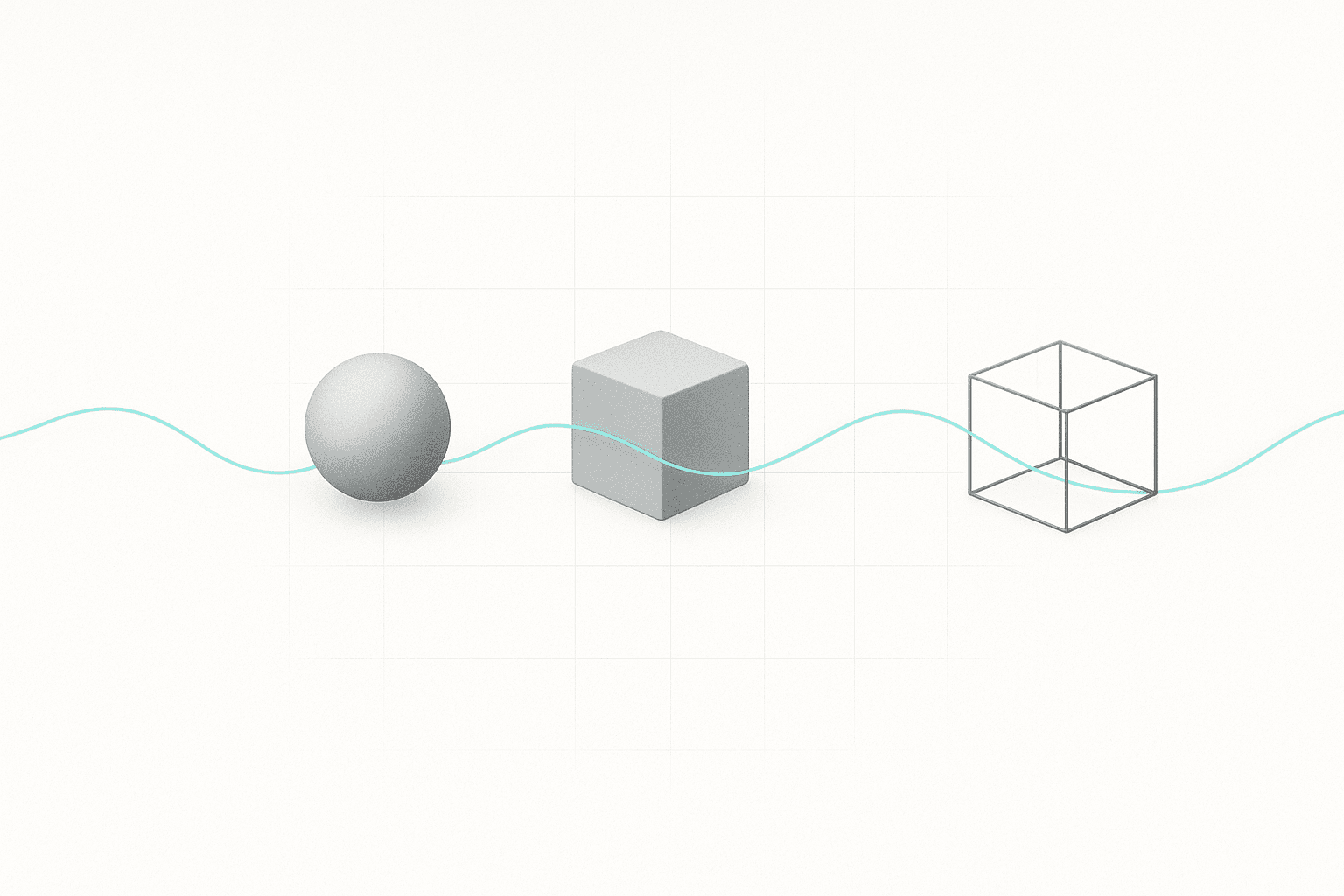Top 5 ERP Trends in 2025: What’s Shaping the Future of Enterprise Operations
From just a system of record, ERP has now become an operating layer for how modern businesses manage complexity. By connecting finance, supply chains, inventory, and planning into one integrated backbone.
And the shift is accelerating. According to Fortune Business Insights, the global ERP software market is projected to grow from $92.6 billion in 2025 to $229.8 billion by 2032, at a CAGR of 13.8%. North America leads with over 35% market share, but adoption is rising globally as enterprises look to modernize fragmented operations.
What’s changing isn’t just where ERP lives but how it behaves. Modern systems are designed for:
-
Modular deployments that move faster than monolithic suites
-
AI-powered workflows across finance, planning, and operations
-
Real-time visibility across channels and business units
-
Industry-specific capabilities that reduce implementation friction
In this article, we break down the five most important ERP trends for 2025, backed by fresh data, enterprise use cases, and platform direction. Whether you're upgrading, replatforming, or rethinking how your ERP fits into a composable stack, this is what you need to know.
1. Cloud ERP Becomes the Default
It started as a shift away from legacy systems and has become the standard for how ERP is implemented, scaled, and maintained. This shift is especially visible in sectors like manufacturing (47% ERP adoption), healthcare (growing at 12% annually), and retail (8%). For these industries, the case for cloud ERP goes beyond cost—it’s about speed, uptime, and flexibility.
Modern cloud platforms eliminate many of the historical headaches of ERP: delayed updates, manual patches, and local server management. Deployment timelines are shorter, upgrades are automatic, and new features can be rolled out with minimal disruption. IT teams get to spend less time maintaining systems, and more time enabling them.
Vendors like NetSuite, Dynamics 365, and SAP S/4HANA Cloud continue to lead in their segments—but the real story in 2025 is how quickly mid-sized and enterprise companies are moving away from on-prem.
If your ERP still sits on local infrastructure, the cost isn’t just IT overhead but lost agility, slower decisions, and every workaround your team has had to build just to keep up.
2. Composable ERP Replaces Monoliths
In 2025, more enterprises are walking away from rigid, all-in-one systems in favor of composable ERP: modular, API-driven platforms that flex as the business changes. Think of it as an operational mindset rather than a technological choice.
Netsuite shared a survey of IT decision-makers conducted in 2023 and 62% named digital transformation a top priority. Among them, 76% had heard of composable ERP, and 84% planned to invest in it. It’s no surprise: rigid systems can’t keep up with real-world change.
What makes composable ERP so useful isn’t its architecture. It’s the control it gives back to the business.
-
Composable ERP gives teams options.
-
Swap out your inventory engine without touching finance.
-
Add a returns workflow without reconfiguring order management.
-
Keep what works. Replace what doesn’t.
It’s how operations leaders stay agile in markets that don’t wait for replatforms.
In 2025, the best ERP isn’t the one with the longest feature list. It’s the one that lets you evolve without starting over.
3. AI-Powered ERP Takes Off
AI is now baked into how modern systems operate - automating decisions, accelerating workflows, and closing the gap between planning and execution.
The shift is already mainstream. 83% of ERP projects now include AI, and enterprise deployment is expected to grow from 53% to over 72% in just one year (Panorama Consulting Group’s latest survey). The market is on pace to hit $46.5 billion by 2033, but the real story is what businesses are getting from it right now.
-
SAP is shifting toward predictive maintenance and supply chain resilience, using AI to flag issues before they impact operations.
-
Oracle is focusing on autonomous finance, building AI tools that surface anomalies and automate reconciliation—freeing finance teams to focus on strategy, not cleanup.
-
Microsoft’s Dynamics 365 Copilot is bringing AI into daily workflows with natural language prompts—letting users query reports, trigger actions, or model scenarios without technical barriers.
In each case, the tech is secondary. The real value lies in how operators work differently. With AI assisting not just automation, but in decision logic, prioritization, and day-to-day responsiveness.
4. Real-Time Analytics and Decisioning
Legacy ERP systems told you what happened. In 2025, modern platforms tell you what to do next.
Real-time analytics has become a core feature of enterprise ERP—not as an add-on dashboard, but as a decision layer built directly into day-to-day operations. Inventory fluctuations, margin pressure, supplier risks—these aren’t just monitored anymore. They’re responded to in real time.
What’s driving this shift isn’t just speed. It’s context.
Dashboards are no longer static reports. They’re embedded directly into workflows—showing relevant data the moment a planner updates a forecast, or a buyer reviews a PO. The result: fewer missed signals, faster reactions, and more confident decisions at every layer of the org.
Smart ERP platforms now support:
-
Alert-driven operations: where KPIs trigger actions, not just notifications
-
In-workflow analytics: no tab-switching, no delayed exports—just insight at the point of action
-
Predictive visibility: AI models surfacing not just what changed, but what’s likely to change next
In volatile markets, this is how teams keep pace with volatility without resorting to gut feel or spreadsheet gymnastics
5. Industry-Specific ERP Becomes the Default
Horizontal ERP is still alive but for most growing companies, it’s not enough.
In 2025, more businesses are turning to industry-specific ERP platforms that reflect the way their sector actually works. These systems aren’t just pre-configured, they’re pre-aligned: with regulatory needs, operational models, and the metrics that matter.
For example, a manufacturer doesn’t just need inventory visibility. They need MRP logic, batch-level traceability, and uptime monitoring. A retail brand doesn’t just need order management. They need multi-channel fulfillment, SKU-level returns workflows, and real-time margin tracking.
That’s why vendors like:
-
NetSuite offer vertical stacks tailored for DTC, with out-of-the-box tools for omnichannel and customer retention
-
Microsoft Dynamics 365 delivers deep manufacturing modules, from production sequencing to quality control
-
SAP continues to lead in regulated industries with built-in compliance templates
And now we’re seeing the next evolution: industry clouds. These are not just vertical ERPs hosted in the cloud, but integrated ecosystems. Think finance, inventory, analytics, and compliance all tailored for a specific business model, deployable without rewriting your stack.
For ops teams, this means less customization, fewer plugins, and faster time-to-fit, not just time-to-deploy.
FAQ: ERP Trends in 2025 & Planning for the Next
1. What is a composable ERP, and when does it make sense for commerce brands?
Composable ERP is a modular approach that lets businesses build their ERP system piece by piece, connecting best-fit components (like order management, finance, or fulfillment) instead of buying an all-in-one suite. For fast-scaling commerce brands, it’s especially useful when you need to replace one part of your stack, say, upgrade your inventory logic, without overhauling finance or customer service.
If your team is juggling multiple systems and custom workflows, composable ERP lets you reduce technical debt while gaining more control over how the system evolves.
2. Does AI in ERP actually help operations, or is it still early?
It’s very real and it’s already embedded into most modern ERP platforms.
In 2025, AI in ERP is powering demand forecasts, surfacing financial anomalies, and automating repetitive tasks like PO matching or reconciliations. The key is to focus on production-ready AI: tools that support your existing workflows and make daily decisions faster, not flashy features that no one uses.
If your team is spending too much time pulling reports or managing exceptions manually, that’s a signal your current ERP is behind.
3. Is vertical-specific ERP worth it, or should we stay with general systems?
For most commerce businesses, especially in DTC, retail, or manufacturing, industry-specific ERP is not optional anymore.
Vertical ERPs come pre-configured with workflows and reporting that match your category. That means faster deployment, less customization, and fewer workarounds. You’ll spend less time translating your business model into ERP language, and more time optimizing what already works.
Look for vendors that offer industry cloud options tailored to your vertical, not just general modules rebranded for your sector.
4. How do we know it’s time to replatform or modernize our ERP?
Ask your ops and finance teams what they’ve outgrown.
If they’re relying on spreadsheets to reconcile data, struggling with real-time visibility, or constantly customizing basic workflows, your ERP is holding you back. Another sign: if integration projects feel painful every time you launch something new (a new sales channel, a returns platform, a 3PL), your architecture likely isn’t built for modern commerce.
The cost of staying static often shows up in lost agility and duplicated effort, not just license fees.
5. Which ERP platforms are leading for mid-market and enterprise commerce in 2025?
It depends on your complexity, scale, and tech maturity.
-
NetSuite leads for mid-market brands and fast-growing DTC businesses
-
Microsoft Dynamics 365 works well for B2B and manufacturing-heavy orgs needing deep finance + supply chain
-
SAP S/4HANA Cloud serves complex, multinational enterprises with strong compliance needs
-
For composable builds, integration-first platforms like Acumatica and Odoo are gaining traction globally, especially in APAC and EMEA
What matters most isn’t the brand; it’s the fit. Prioritize platforms with clear upgrade paths, proven integrations, and flexible deployment models for the regions you operate in.




